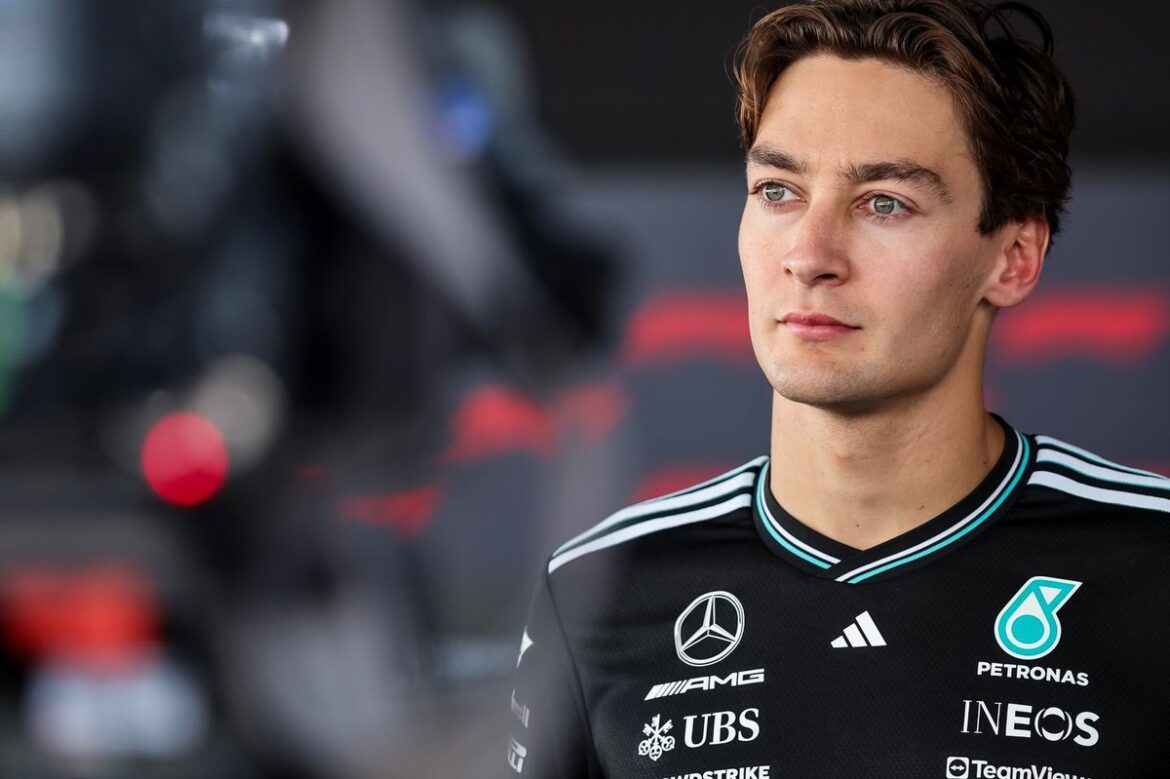George Russell Reflects on Team Orders and Race Dynamics at the Mexico Grand Prix
During the recent Mexico Grand Prix held at the Autódromo Hermanos Rodríguez, George Russell, the British driver for Mercedes, expressed his frustrations regarding the team’s handling of race strategies, particularly concerning team orders. This pivotal moment unfolded as Russell aimed to secure a better position amidst a challenging race environment.
The Call for Team Orders
As the race progressed, Russell found himself in a position where he believed he could outperform his teammate, Andrea Kimi Antonelli. On lap 35, Russell signaled to the Mercedes team, urging them to allow him to overtake Antonelli, citing that he had superior pace compared to the Italian driver. However, instead of enforcing the team orders, Mercedes opted to give Russell the freedom to race. This decision was crucial, as it left Russell in a competitive situation where he felt he could capitalize on his speed.
The dynamic within the team became increasingly tense as Russell navigated the track. He was aware of the competitive landscape, noting that both a Ferrari and a Haas car were ahead, creating an opportunity for a potential podium finish. His eagerness to gain ground was evident when he expressed his frustration to the team, stating, "We got a Ferrari and a Haas ahead, we can fight for the podium here!" This comment underscored his determination to seize the moment and push for a better result.
Rising Tensions
As the race progressed to lap 38, Russell’s impatience grew. He sarcastically questioned whether he should let a McLaren pass, highlighting his frustration with the lack of decisive action from the Mercedes team. "Do you want me to let this McLaren pass?" he asked, signaling his awareness of the competitive nature of the race and the urgency to make strategic decisions. He reiterated his willingness to relinquish his position back to Antonelli if he could not successfully overtake the driver ahead, emphasizing that their current strategy was compromising both of their races.
Simultaneously, the pressure mounted as McLaren’s Oscar Piastri began closing in on Russell. The tension was palpable, and Russell’s race engineer, Marcus Dudley, warned him about the overheating of the rear surface temperatures on the car. This communication added another layer of urgency to the situation, as Russell was acutely aware of the need to maintain optimal performance.
Frustrated by the complexities of the race, Russell firmly stated, "Marcus, I’ve got an ing car in my . A car much quicker than ours. I’m trying to hold position. I’ve got much more pace than Kimi here and we can fight for a podium." His response illustrated the competitive spirit that defines Formula 1, as he was determined to push the boundaries in pursuit of a podium finish.
Delayed Team Orders
Ultimately, Mercedes decided to allow Russell and Antonelli to swap positions on lap 41. However, Russell felt that this decision came too late in the race to make a significant impact. In his post-race interview with Sky Sports F1, he reflected on the missed opportunity, stating, "I had a lot of pace in those laps and would have been able to attack Ollie, who had no DRS. Obviously, I was in the DRS train behind Kimi."
Russell expressed disappointment over the timing of the team orders, noting that they had waited too long to act. "I think we left it 10 laps," he remarked, highlighting that by that point, his tires had begun to overheat, and other components of the car, including the brakes and engine, were also suffering from excessive heat. He concluded that the delay rendered the team orders ineffective, stating, "It was either do it straight away or don’t do it at all. So in the end, we deserve to finish where we did. A bit frustrating."
The Outcome of the Race
In the end, Russell was unable to capitalize on the opportunity to overtake and finished the race in seventh place. The experience served as a reminder of the complexities and strategic nature of Formula 1 racing, where decisions made in the heat of the moment can have lasting implications on race outcomes.
This race not only highlighted the importance of timely team communication but also underscored the competitive spirit that drives drivers like Russell to continuously strive for improvement. The dynamics within the Mercedes team, particularly regarding the handling of team orders, will undoubtedly be a topic of discussion as they move forward in the season.
As drivers and teams analyze their performances, the lessons learned from the Mexico Grand Prix will likely shape strategies for future races. The need for clear communication and decisive action becomes paramount, especially in the high-stakes environment of Formula 1, where every second counts and the margins for error are slim.
In conclusion, George Russell’s experience at the Mexico Grand Prix serves as a testament to the challenges faced by drivers and teams in the fast-paced world of Formula 1 racing. As they look ahead to future races, the insights gained from this race will play a crucial role in refining their strategies and enhancing their performances on the track.
